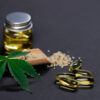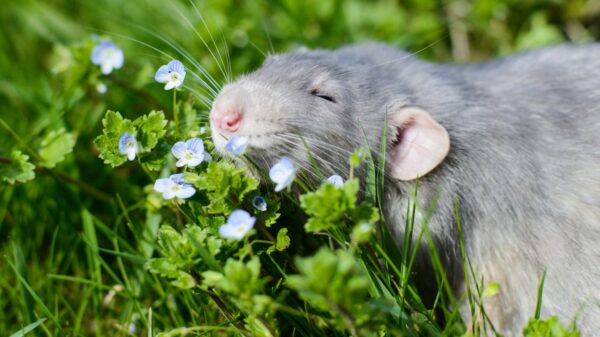That skunky, gassy scent that some cannabis cultivars emit is thanks to recently identified scent-producing sulfur compounds that are almost identical to the ones found in garlic and skunk spray.
That’s according to a recent study published in the journal American Chemical Society that took a deeper look at what causes the distinct skunky smells in some types of weed, given that no combination of terpenes seem to produce this particular odour.
Researchers from terpene-specialized extraction company Abstrax Tech, identified that the skunk smell comes from a family of seven scent-producing molecules called volatile sulfur compounds (VSCs).
“The combination of multiple detectors, in tandem with two-dimensional gas chromatography to analyze cannabis, gave us the tools needed to parse through data and identify trends between certain compounds and the aromas of various cannabis cultivars,” lead author Iain Oswald said in a statement.
“Our data conclusively establishes a link between this new family of VSCs in cannabis and its pungent aroma.”
VSCs are part of a family of volatile organic compounds which also includes the terpenes and terpenoids that are responsible for stimulating your nose when you sniff dank buds of weed.

Graphic via ‘Identification of a New Family of Prenylated Volatile Sulfur Compounds in Cannabis Revealed by Comprehensive Two-Dimensional Gas Chromatography’
The study found that production of the skunk-smell molecule increased significantly toward the end of the flowering stage, peaked during curing and dropped substantially after 10 days of storage.
“This study really opened my eyes,” co-author Mario Guzman says.
“It confirmed everything I had thought about some cultivars I have bred — that they are some of the most pungent and medicinal on the market. These compounds are the reason Gelato and subsequent crosses are some of the most highly sought after out there.”
Read more: Terpenes imitate and enhance cannabinoid activity: study
Read more: Ontario company develops 35% THC cannabis with no smell
For the study, researchers analyzed 13 cannabis cultivars using two-dimensional gas chromatography (2DGC), coupled with other techniques to analyze substances such as mass spectrometry and sulfur chemiluminescence, a method that detects only compounds with sulfur.
A panel of four people smelled and ranked the pungency of the cultivars on a scale of 0-to-10. The panel found that the most pungent cultivar was Bacio Gelato, and had the highest concentration of VSCs.

The skunky secent-producing compounds in cannabis are chemically similar to those found in garlic
VSC3 is the skunkiest compound
The study discovered seven kinds of VSCs that gave cannabis its skunk-like aromas, but VSC3 was most abundant in the cultivar with the most stank.
To confirm that VSC3 was the main source of the skunky smells, researchers added a mixture of 10 other major aroma compounds from cannabis and were able to reproduce a weed-like aroma.

Cannabis cultivars have various levels of VSCs
Different concentrations of molecules give each cultivar its particular aroma
OG Kush possesses a strong, pungent, fuel-like aroma that comes from high concentrations of ß-myrcene and ß-caryophyllene while Jack Herer has high amounts of terpinolene and D-limonene, creating a woody and citrus aroma.
But terpenes are only part of the story.
“I have suspected for years now that we were missing something in our understanding of this plant,” co-author and originator of OG Kush Josh Del Rosso said.
“Although terpenes have been hailed as the major source of the pungent scent of cannabis, we now know that it is this new class of VSCs.”
Over 200 scent compounds have been found in cannabis plants typically including terpenoids like ß-myrcene, a-and ß-pinene, D-limonene, ß-caryophyllene, terpinolene, and humulene, which can individually contribute up to 50 per cent of the aroma concentration.
The researchers say that the same anti-cancer and cardioprotective effects that come from some compounds found in garlic are also found in cannabis, and this should be enough reason to expand research in this area.
Follow Natalia Buendia Calvillo on Twitter
natalia@mugglehead.com













Jim D.
April 1, 2024 at 8:36 pm
Brilliant idea to write this article 👏
Extremely informative and should be helpful in my hunt for something special. I’ve been focusing on terpenes for a while now so your article is exactly what I needed to hear! Thanks so much!